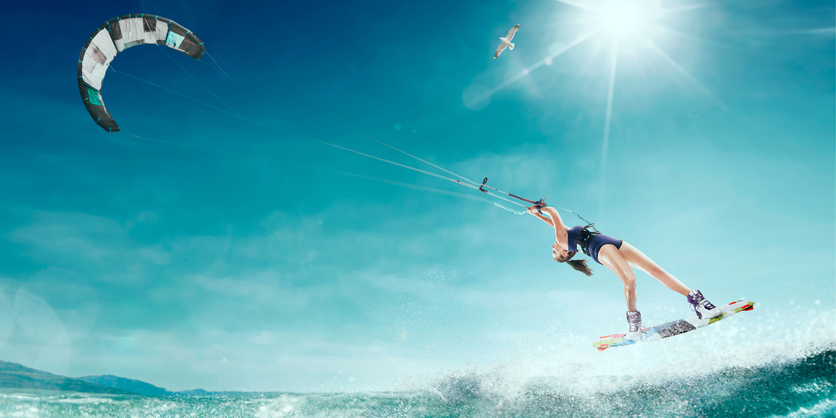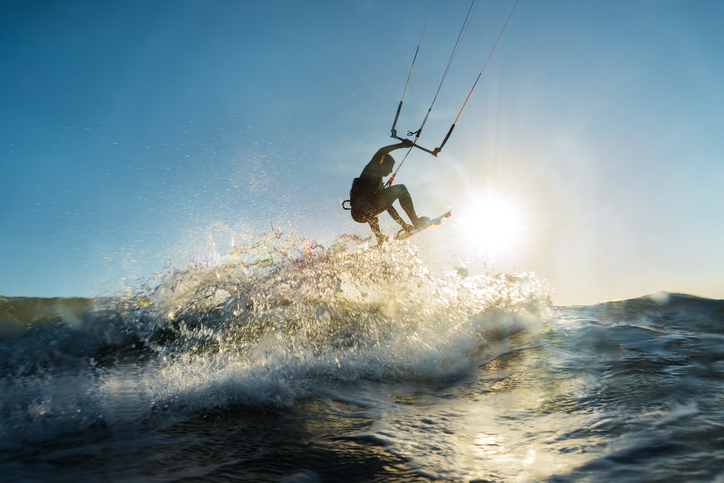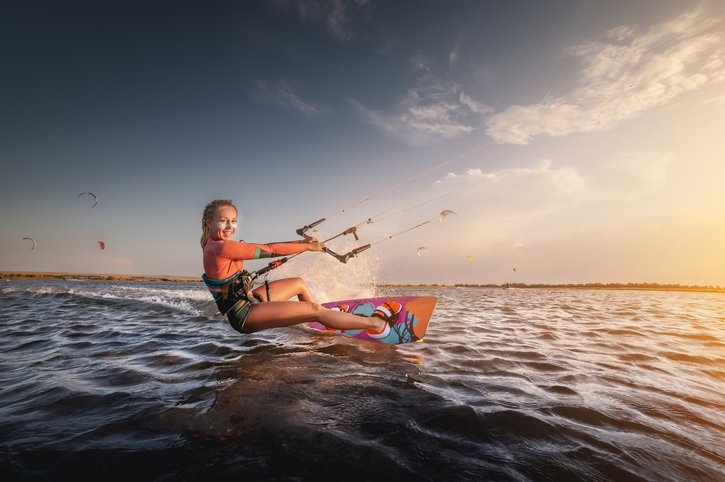Is It Hard to Learn Kitesurfing? Unveiling the Thrills and Challenges
Kitesurfing, a dynamic water sport that combines the power of wind with the thrill of gliding across the water, has gained immense popularity in recent years. As with any new adventure, one of the first questions that come to mind is, “Is it hard to learn kitesurfing?”
In this article, we will delve into the world of kitesurfing to uncover the challenges and rewards that await aspiring riders. So let’s dive in!


The Learning Curve: Challenges
Learning any new skill requires dedication and perseverance, and kitesurfing is no exception. While it may seem intimidating at first, the learning curve can be navigated smoothly with proper instruction, practice, and the right mindset. Here are some factors that contribute to the perception of difficulty:
- Previous Experience: Having experience in related board sports, like wakeboarding or snowboarding, can make the learning process smoother, as you might already possess some fundamental skills. Sailing or windsurfing can also help, having already wind-related knowledge.
- Weather Conditions: we are weather dependent, so we can only learn when the wind is on. Learning in a consistent wind will make the process much smoother.
- Technical Knowledge: Understanding the wind, kite control, safety procedures, and equipment handling, form the foundation of kitesurfing. This theoretical knowledge is crucial for a safe and enjoyable experience. With the right guidance, you’d love to understand the technical aspect of this wonderful sport.
- Kite Control: Mastering kite control is a fundamental skill in kitesurfing. It involves maneuvering the kite through various positions, generating power, and de-powering it when needed. Learning to control the kite with finesse requires practice and coordination.
- Patience and Persistence: Progress in kitesurfing can be gradual, and frustration is common, especially during the early stages of learning. Patience and persistence are essential to overcome these challenges and improve your skills.
- Body Dragging: Body dragging is an essential skill that allows riders to navigate through the water without a board. It helps develop water confidence, board recovery techniques, and to drag you in and out of the water if necessary. Body dragging is loved by many of our students, you’ll discover the power of the kite in total safety, while feeling like a dolphin gliding through the water!
- Board Skills: Once comfortable with kite control and body dragging, the next step is incorporating the board. Balancing on the board, edging against the water, and riding in different directions require practice to develop muscle memory and coordination.
- Instruction: The quality of instruction and coaching you receive can make a substantial difference in how quickly and safely you learn to kitesurf. Rest assured that with Tarifa Max Kitesurfing school, you are in the most experienced hands in Tarifa!
- Safety Concerns: Kitesurfing can be dangerous if not done correctly. There are specific safety protocols and techniques that you must learn to minimize the risks associated with the sport, such as self-rescue and proper use of safety releases.
- Costs: Kitesurfing equipment can be expensive, and lessons from certified instructors are recommended for safety reasons, but can also add to the overall cost.

A note on Physical Fitness: while it’s definitely true that a good fitness level will speed up your learning process, kitesurfing can be learnt from everyone, regarding previous experiences. Flexibility and endurance will definitely help you in the waterstart phase.
Rewards
While kitesurfing may present a learning curve, it’s essential to remember that the journey itself is packed with excitement and rewards:
a. Pure Adrenaline: Kitesurfing offers an adrenaline rush like no other. Harnessing the power of the wind, gliding across the water, and performing exhilarating jumps and tricks provide an unmatched sense of freedom and excitement.
b. Connection with Nature: Being out on the water, feeling the wind against your face, and immersing yourself in the beauty of nature is a truly enriching experience. Kitesurfing allows you to connect with the elements and appreciate the wonders of the natural world.
c. Personal Growth: Learning to kitesurf pushes your boundaries, builds confidence, and enhances resilience. Overcoming challenges and mastering new skills fosters personal growth and a sense of achievement.
d. Community and Camaraderie: Kitesurfing communities worldwide are welcoming and supportive. You’ll have the opportunity to meet fellow enthusiasts, share experiences, and learn from one another, while bonding over a new passion.
e. Physical Fitness: The sport provides an incredible full-body workout. You’ll develop strength, balance, and coordination while having a blast on the water.
Tips for Success:
To make your kitesurfing learning journey smoother and more enjoyable, consider the following tips:
- Take Lessons: Enroll in professional kitesurfing lessons with certified instructors who can guide you through the learning process, ensuring safety and proper skill development.
- Practice Patience: Learning to kitesurf takes time. Embrace the learning process, be patient with yourself, and celebrate small victories along the way.
- Stay Safe: Always prioritize safety by following guidelines, using appropriate safety equipment, and being aware of your limits and surroundings.
- Consistent Practice: Regular practice is key to improving your kitesurfing skills. Dedicate time to practice kite control, body dragging, and board skills to build muscle memory and confidence.
- Connect with the Community: Engage with the kitesurfing community, both online and offline. Connect with experienced riders, seek advice, and share your progress. The kitesurfing community is known for its supportive and welcoming nature. Check out BIG BLUE Boards, a female community that will help you find your bold side!
Conclusion:
While kitesurfing may present initial challenges, the rewards far outweigh the difficulties. With proper instruction, practice, and a positive attitude, learning to kitesurf can be an incredibly rewarding and exhilarating experience. Embrace the learning curve, appreciate the beauty of the sport, and get ready to soar across the water, propelled by the wind.
At Tarifa Max Kitesurfing School, we are committed to providing top-notch instruction to help you navigate the learning curve and experience the thrill of kitesurfing safely. So, if you’re up for an adventure and ready to embrace the challenges, come join us and embark on a journey that will leave you craving more wind and more time in the water. Remember, the sky is the limit, and the sea is your playground!


